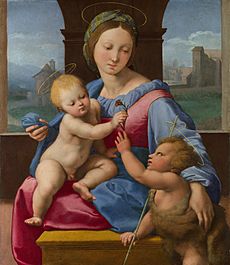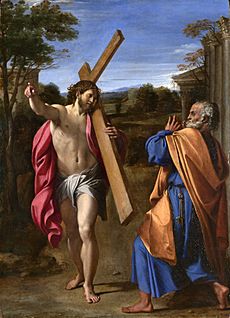Alexander Day (artist) facts for kids

Alexander Day (born around 1751 – died 12 January 1841) was a talented miniature painter and an art dealer. He was born in Britain but spent most of his working life in Rome, Italy.
Life and Work
Alexander Day was born around 1751. He learned how to paint portraits from an artist named Ozias Humphry.
Travels to Rome
In 1774, Day traveled to Rome. He stayed there for about forty years. During this time, he met and worked with many other artists. These included British artists like James Nevay and Thomas Jones. He also worked with European artists such as Angelica Kauffman and Vincenzo Pacetti.
While in Rome, Alexander Day bought and sold many artworks. He sold his own small miniature paintings to British visitors. He also sold very old and famous paintings, known as Old Masters. Some of his customers included important people like Frederick Augustus Hervey and Richard Worsley. Day often bought paintings from another dealer, Pietro Cammuccini, and then sold them to British art collectors.
Returning to Britain
In 1800, Day came back to Britain. He put on shows where he displayed many Old Master paintings. These artworks were then bought by famous collectors, including John Julius Angerstein.
Day went back to Italy in 1802. That same year, he sent more paintings and new sculptures to London to be sold.
In 1815, Alexander Day moved back to Britain for good. He shared a house with Nathaniel Marchant, who was an expert at carving designs into precious stones (a gem-engraver). When Marchant passed away in 1816, Day married Marchant's housekeeper. She had inherited a good sum of money from Marchant.
Famous Artworks He Handled
Alexander Day was involved in buying and selling many important artworks. Some of these paintings are now in famous museums. For example, he bought Annibale Carracci's Christ appearing to Simon Peter after his Resurrection. This painting can now be seen in the National Gallery in London.
He also bought Temptation of St Anthony by Annibale Carracci from the famous Borghese collection. In 1792, he acquired Andrea Mantegna's Adoration of the Shepherds. This painting was later sold to Richard Payne Knight.
Alexander Day was also known for his own miniature portraits of ladies. These paintings were considered very elegant and beautiful.
Later Life
Alexander Day passed away in Chelsea, London, on 12 January 1841.
You can see a pencil portrait of Alexander Day at the National Portrait Gallery, London.


